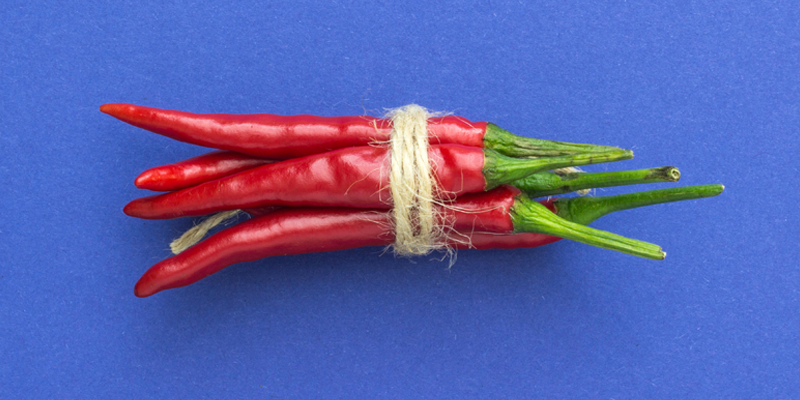
Reading time: 4 Minutes
Before you reach for the thermostat, bear in mind that the optimum office temperature varies according to the task in hand, reports Matt Burgess
It’s a hot topic, if you’ll excuse the pun. When it comes to workplace disagreements, temperature is right up there, along with the lighting, acoustics and air quality. “It has a huge impact on employee satisfaction,” says planning and sustainability expert Megan Nollman.
That’s partly because office temperature can fluctuate much more erratically than almost all other environmental factors. A window being opened at one sunny end of an open-plan space may be ideal for the people sitting nearest to it but, for the employees seated on the other side of the room, it may be a complete disturbance.
What’s more, our perception of a ‘comfortable’ temperature is influenced by many different factors, including our age, our physical health and even our stress levels – meaning that it’s unlikely that you and your colleagues will agree on what comfort means.
But why does it matter? Research(1) has found that temperatures being too hot can cause headaches, lower concentration and, in extreme circumstances, result in nausea and vomiting while lower temperatures can increase blood pressure and cause illnesses to develop.
Not only that, but the office temperature can also impact on much more than just how comfortable or well it makes us feel: it is also linked to productivity. Research from the Berkeley National Laboratory(2) has suggested that performance in tasks can increase when temperatures are between 21-22°C and they start to decrease above or below this. Nollman adds that studies have shown there’s a 16% decrease in productivity in offices where temperatures rise above 25.4°C.
City heat
It’s not an issue that’s going away – particularly when we consider the potential impact of global warming on the planet in future years. One study(3) has suggested that Southeast Asia, Andean and Central America and the Caribbean could see drops of up to 27% in productivity by the 2080s because of rising temperatures.
Cities are going to be particularly badly hit. “Office buildings are very vulnerable to overheating because of the profound internal heat gains,” says Hélia Costa, a research fellow at the Toulouse School of Economics. The high amounts of concrete, asphalt and air conditioning, plus a lack of shade-bearing vegetation in urban environments, all contribute to offices in cities getting hotter than those located in more rural areas. The phenomenon is known as the urban heat island: cities are warmer than remote areas, particularly at night(4).
Studies have shown there’s a 16% decrease in productivity in offices where temperatures rise above 25.4°C.
Taking control
So what can businesses do to make sure their office workers are kept comfortable and content? Nollman says that office managers should relinquish control of the thermostat. “The ability to adjust the temperature in one’s personal workspace up or down by just 3°C has an impact on productivity and on employee satisfaction,” she says.
While the idea may seem counterintuitive, it seems that giving employees control of the temperature gauge also gives them a sense of independence. After all, nobody wants their workplace heated or cooled by a faceless ‘other’ on another floor of the office.
Yet Nolland does caution against allowing too much free rein. “I recommend having definite upper and lower limits enforced,” she says, suggesting that the temperature shouldn’t rise above 25°C, nor fall below 20°C.
Louise Suckley, a senior lecturer in strategy and enterprise at Sheffield Hallam University, proposes that employers grant a degree of personal control to workers by allowing them to work in different areas of the workspace based on thermal comfort. “It would be good to provide a range of temperature ‘zones’ across the workspace, and an organisational culture that supports this flexibility,” she says. Different types of furniture can also be installed in these spaces that can match the temperature profile.
Finding a balance
Helier Costa reminds workers that there are plenty of things they can do to improve their own thermal comfort. These include drinking more water to stay hydrated as temperatures increase, wearing cooler clothes, when necessary, and taking breaks during the day. For these to be effective, employees need to be given more information about the benefits of their own actions, she adds.
Costa’s research has previously recommended that London offices may benefit from working hours of 07:00-11:00, a long break in the middle of the day and then working from 17:00-20:00.
Perhaps it’s worth remembering that different temperatures may be better suited for certain types of work. “Slightly warmer temperatures are most conducive to problem-solving and creative thinking tasks,” says Megan Nolland. In multiple tests(5), researchers have discovered that people were more creative when the thermostat went up.
Meanwhile, “slightly cool temperatures can have a positive impact on performance for repetitive and task-oriented duties,” adds Nollman. Studies(6) have found that the body is kept slightly more alert when temperatures are cooler, with Facebook CEO Mark Zuckerberg reported(7) to keep meeting room temperatures at 15°C so people are focused.
Cool idea? Or something destined to leave workers feeling hot under the collar? Perhaps it’s time for a temperature check…
Matt Burgess is an award-winning British journalist and author working for Wired magazine in the UK
Sources:
(1) http://www.oulu.fi/sites/default/files/content/Ikaheimo_TM_Temperature_and_human_health_28102014.pdf
(2) https://indoor.lbl.gov/sites/all/files/lbnl-60946.pdf
(3) https://www.tandfonline.com/doi/abs/10.1080/19338240903352776
(4) http://www.lse.ac.uk/GranthamInstitute/news/heat-waves-productivity-and-the-urban-economy-what-are-the-costs/
(5) https://www.researchgate.net/publication/285320928_Creative_thinking_as_the_dependent_
variable_in_six_environmental_experiments_A_review
(6) https://www.sciencedirect.com/science/article/pii/S0360132309000985
(7) https://www.bbc.co.uk/news/av/business-21767297/what-s-the-best-office-temperature



